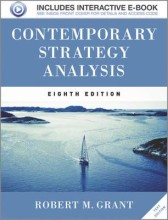Summary: Product Innovation
- This + 400k other summaries
- A unique study and practice tool
- Never study anything twice again
- Get the grades you hope for
- 100% sure, 100% understanding
Read the summary and the most important questions on Product Innovation
-
Product Innovation - Sources of Innovation - Standard Battles
This is a preview. There are 5 more flashcards available for chapter 04/11/2015
Show more cards here -
What is the difference between product and process innovation
Product: output of an organization --> products and services
Process: way an organization produces products / or markets products -
What is the difference between Steady-state and discontinuous technologies
Steady-state: fulfills similar market need (more) by using/expanding the same knowledge base
Discontinuous: fulfills similar market need by using a new knowledge base. -
What is the difference between modular and architectural innovation
Modular: Improving component of a bigger product
Architectural: Overall design of a system or the way the components (modules) interact -
Discuss the S-curve. Why is it an S. And what is the sailing effect?
Two types:
1. Diffusion/adaption patterns
X-axis: time
Y-axis: Market penetration
2.Technology performance dev.
X-axis: effort
Y-axis: performance
Initially slow: unfamiliar technology
Middle acceleration: technology becomes better understood and utilized by mass market.
End: Market saturation.
The sailing effect: In the end of the technology performance development S curve, the limits of the technology is reached: then a second technology can take over. Between them a sailing effect can occur: old technology is improved since it does not want to be replaced by new technology. (e.g. sail boats vs. steamboats) -
What is meant with the chasm in the innovation adoption curve?
Chasm needs to be crossed to get from the early adopters to the early majority. Companies need to scale up and become efficient to target the big early majority market. -
What are factors that influence the diffusion/adaption of innovations?
Fist customer from early majority
Relative advantage: better than current practice
Compatibility: degree same to existing values, needs and experiences of potential adopters.
Complexity
Trial-ability
Observability: visibility of results of innovation -
What is a dominant design? Why do they emerge?
Product or product architecture that dominates a product category.
It is adopted by the majority of producers, typically creating a stable architecture on which the industry can focus its efforts on.
Why emerge:
- Regulation
- Increasing return on adaption
- Learning effects
- Network exeternalities (e.g. mobile phones, railroads) -
Customer value & Business model innovation - Business planning
This is a preview. There are 7 more flashcards available for chapter 06/11/2015
Show more cards here -
What is customer value based on functional analysis?
Customer value = Perceived benefits (by customers)
Total Customer Costs
Perceived benefits: Main, adding, (-)harmful
Total customer costs: Purchasing costs, operating costs, repair/removal costs -
What is customer value in terms of utility?
Customer value = Satisfaction of customer needs
Use of customer resources
Sat: problems, results, feelings
Use: Time, money, effort -
Not customers are equal.. Name 3 ways to gain competitive advantage (in the sense of what do we offer to whom?)
- Differentiate
- Total Cost advantage
- Focus
- Higher grades + faster learning
- Never study anything twice
- 100% sure, 100% understanding
Topics related to Summary: Product Innovation
-
Customer value & Business model innovation - Business planning
-
Protecting innovation - Innovation Strategy
-
Disruptive Innovation
-
Bengt - Open Innovation and Network Innovation
-
Organizing for innovation - Innovation climate - Innovation through collaboration
-
Managing innovation and efficiency - Innovation performance management and measurement
-
Customer and user-driven innovation
































